
How Texture Wallpaper Hide your Damage Walls without using Paint
GiffywallsWallpapers with textures offer a practical solution for covering up imperfections on your walls without needing paint. If your walls have scratches, dents, or other minor damages, textured wallpaper can easily hide these flaws. This is because the depth and pattern of the texture can distract the eye, making it harder to spot any underlying issues. Applying surface wallpaper is a quicker and often more affordable than going through the hassle and expense of repainting or plastering. Plus, it adds an element of style to your room. You can choose various designs to match your decor, from subtle textures that mimic materials like fabric or wood to more pronounced patterns that add a unique touch to your space. Textured wallpapers are not just about aesthetics; they serve a functional purpose by giving your walls a fresh look while concealing any damage.
Different Types of Texture Wallpaper:
Wallpapers have the power to define a space with a touch of artistry. The variety of textures in wall murals offers a unique opportunity to reflect your style in interior design. From the rustic charm of wooden planks that add warmth to a study to the rugged allure of a brick finish bringing an urban feel to your living room, each mural stands out in its own right. The cool, sleek concrete texture is perfect for a minimalist approach, while a wall adorned with the rusty patina of weathered metal provides a dramatic backdrop. Choose wall murals for a durable, stylish, and personalized environment.
Brick wallpaper
Surface wallpaper can effectively conceal imperfections in walls without the need for paint. For example, brick wall murals or brick look wallpaper can mask uneven surfaces and cracks with their detailed patterns. These wallpapers mimic the aesthetic of an actual brick wall and add visual interest to any room. The realistic textures and colour variations in the wallpaper provide depth, which draws the eye away from any underlying damage. Installation is straightforward, and once applied, these wallpapers can also protect the wall from further wear. Their durability makes them an excellent long-term solution for enhancing the appearance of a room while keeping the focus on the wallpaper's intricate design rather than on any flaws in the wall.
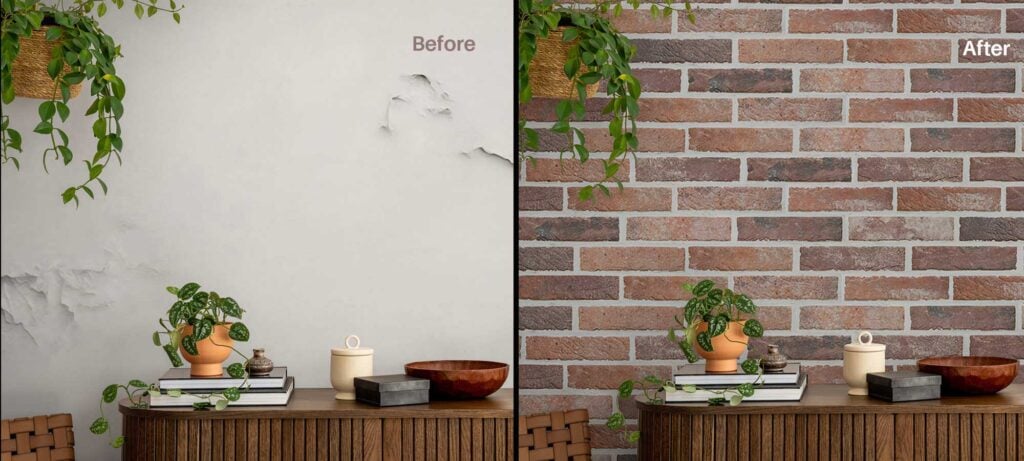
Concrete wallpaper
Texture wallpaper, specifically those with a cement or concrete appearance, offers an effective solution for concealing wall imperfections. The rugged pattern of concrete wall murals can mask dings, scratches, and uneven areas, providing a smooth finish to a room. Unlike paint, which might highlight wall damage due to its uniformity, the varied design in these wallpapers helps disguise flaws. These designs add an industrial touch to interiors, providing a modern and urban feel without requiring extensive renovations. Installing such wallpapers is relatively straightforward and does not require the labour or drying time associated with painting, making it a convenient option for quickly improving the appearance of a space.
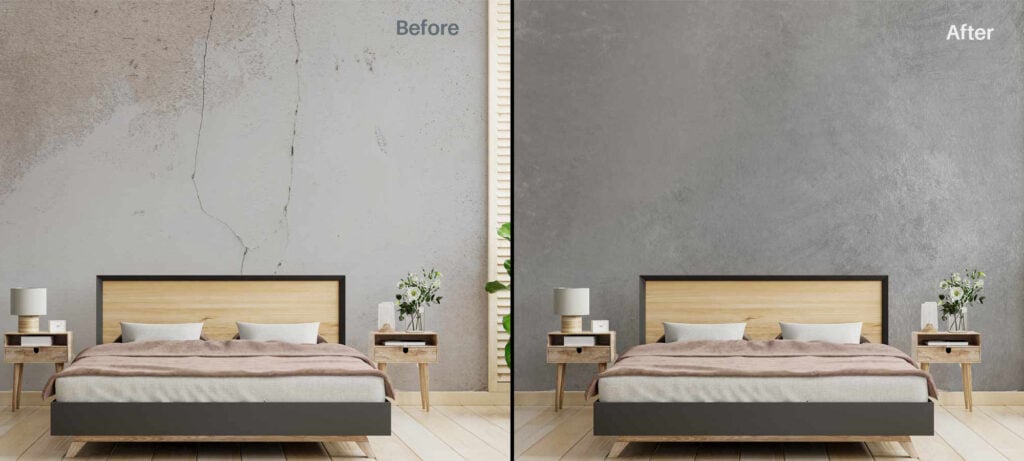
Tile wallpaper
Tile wallpaper can be a smart choice for covering imperfections on bathroom walls caused by water damage. Unlike paint, which might require a base of plaster to even out the surface, wallpaper with a textured tile pattern can conveniently cover up the blemishes without extensive preparation. The tile design adds depth and an aesthetic touch to the walls, drawing attention away from flaws. It's a practical solution that's also cost-effective. You can select patterns and colours that match your bathroom's decor. Installation is usually straightforward, and the wallpaper can act as a protective layer, preventing further damage from moisture when properly installed. Plus, it's a less messy alternative to painting, saving you time and effort.
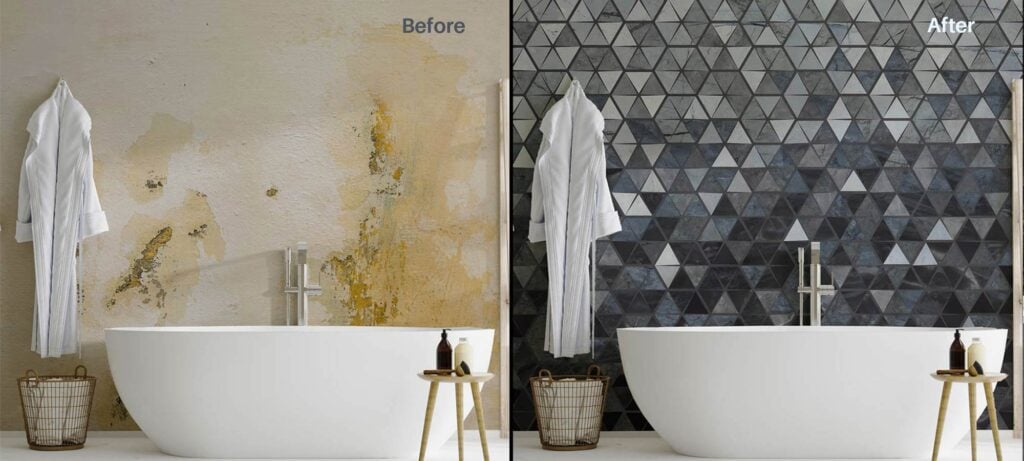
Wood wallpaper
Wooden wallpaper offers a practical and stylish solution for concealing imperfections on your walls. Its detailed grain and natural warmth add a cozy feel to any room. This type of wallpaper is particularly effective at hiding dents, scratches, and uneven surfaces, allowing you to refresh your space without needing paint. Installation is straightforward, resulting in a seamless look that can complement various decor styles. Whether you opt for a light, airy birch or a rich, deep mahogany, wood look wallpaper is versatile enough to harmonize with your existing furnishings and colour schemes. Its durability means it can withstand daily wear and tear, making it a long-lasting option for enhancing your home's interior.
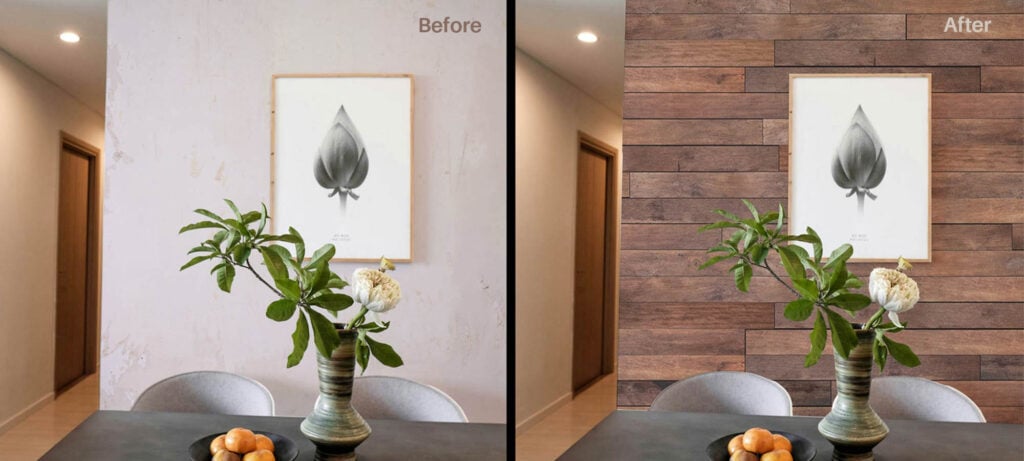
Metal wallpaper
When your kitchen walls bear the marks of cooking mishaps, such as stains from oil smoke or burn marks, covering them up can be a challenge. One creative solution is to use textured wallpaper. This kind of wallpaper can effectively conceal imperfections without the need to repaint the area. Metal wallpaper comes in various patterns and thicknesses, so it can cover uneven surfaces and discoloured spots, giving your walls a fresh look. It's a practical choice for areas like the kitchen, where walls are prone to getting dirty. Applying Metal look wallpaper is a relatively simple process and can be a quick fix to make your walls look neat and clean again. Plus, it's a less messy alternative to painting and can be easily replaced if it gets stained.
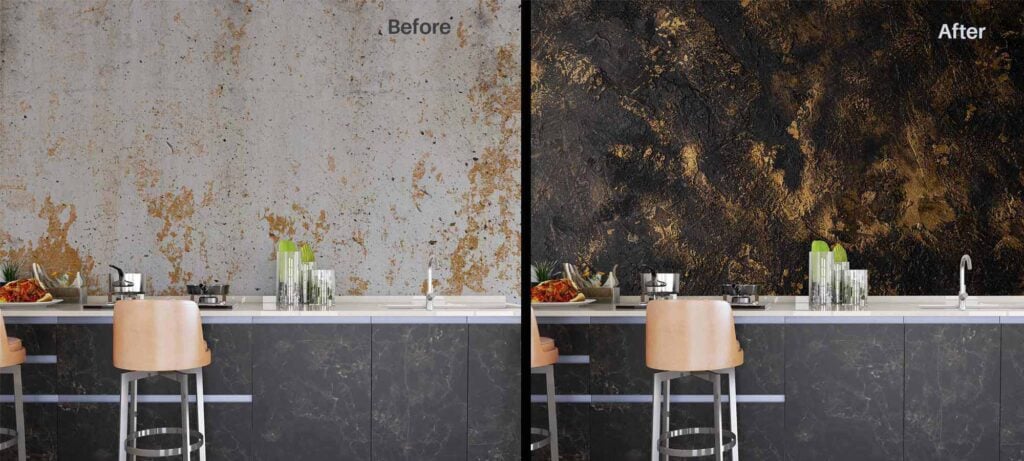
Marble wallpaper
Wallpapers with rich textures offer an effective solution for concealing wall imperfections, particularly in areas like the wash basin where moisture and frequent use can lead to damage. With its intricate veining and varied patterns, a marble wallpaper can cleverly mask blemishes and inconsistencies. The natural elegance of marble adds a touch of luxury to any space, while its diverse palette of colours can blend seamlessly with your existing decor. When applied around a wash basin, a marble-themed wallpaper protects the wall from further damage and creates a visually appealing focal point in the room. This approach is practical, cost-effective, and avoids the need for extensive renovations.
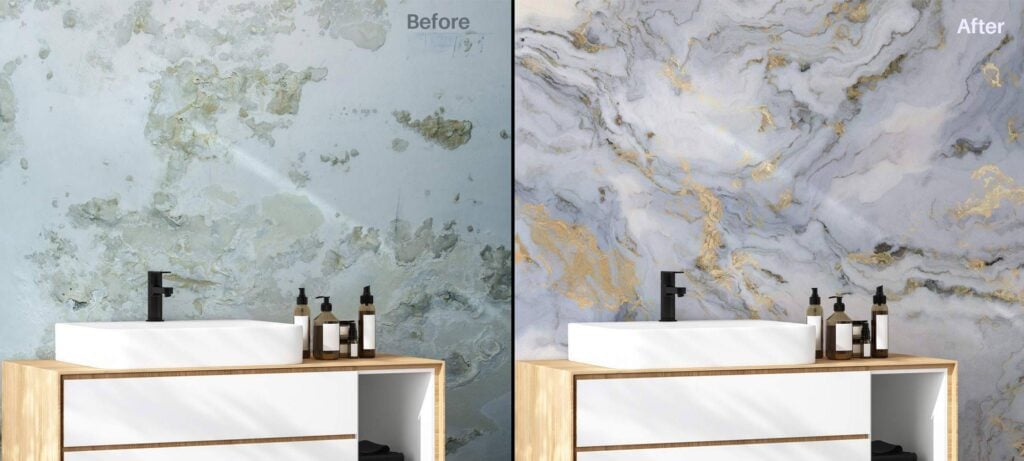
Room-Specific Wallpaper Installation Tips
Bathroom Wallpaper: Ensuring Dry Wall Areas
When applying wallpaper in bathrooms, keep the wall area completely dry. This is crucial around showers and sinks where moisture is prevalent. Use waterproof or water-resistant wallpaper to prevent peeling and mould growth. Preparing the wall by sealing any cracks or gaps ensures a long-lasting fit and maintains the integrity of the design.
Kitchen Wallpaper: Adding Style to Functional Spaces
In kitchens, wallpaper can add personality without compromising functionality. Choose durable, easy-to-clean wallpapers for areas prone to splashes and stains, especially near the stove and wash basin. Option for vinyl wallpapers that can withstand heat and humidity while offering a fresh look to your cooking space.
Bedroom Walls: Personalizing Your Sanctuary
Bedroom walls offer a wall design for personal expression. Select wallpapers that reflect your style and create a peaceful atmosphere. Consider lighter colours and subtle patterns to maintain a relaxing environment. Properly prepare the surface by smoothing out any imperfections for a flawless application, ensuring your bedroom remains a cozy retreat.
In conclusion, texture wallpaper offers an effective and innovative solution for concealing damaged walls without needing paint. Its varied patterns and depth can effortlessly mask imperfections, providing a fresh and appealing look to any room. This approach saves time and resources and opens up a realm of design possibilities, allowing for a personalized touch to interior spaces. By opting for texture wallpaper, homeowners can avoid the mess and fuss associated with painting while achieving a visually appealing outcome. It’s a practical choice that combines aesthetics with functionality, making it an ideal option for refreshing your living environment.
FAQS
- Should You Choose Wallpaper or Paint?
Wallpaper vs. Paint
Wallpaper:
- Definition: A decorative material for covering and enhancing walls.
- Durability: Lasts 10-15 years, washable, but can peel and crack with moisture.
- Removal: Easier to remove, typically peeling off in strips.
Paint:
- Definition: A liquid or paste with pigments that adds colour and protects surfaces.
- Durability: Needs a new coat every 3-5 years, extra cost for washable designs, and resists moisture and heat.
-
Removal: More challenging may require repainting and chemical agents.
Choosing the Right Option:
- For Wallpaper:
- Match the design with the room's style and theme.
- Select materials based on texture and maintenance needs, like traditional paper, canvas paper, or peel & stick-textured options.
- Consider the room's use and traffic for practicality and durability.
- For Paint:
- Select a colour that suits the room's aesthetics.
- Choose the finish type for appearance and durability: glossy, satin, eggshell, or matt.
- Check paint coverage and whether specific preparation is needed.
Final Advice:
Both options offer a range of possibilities for wall decoration. The selection between wallpaper and paint depends on your preference for appearance and experience in home decorating. Consider both to find what suits your home the best.
- How do you choose a suitable wallpaper texture?
Consider the following when choosing texture wallpaper:
- Room Usage: High-traffic areas may benefit from more durable textures.
- Style and Aesthetic: Choose a surface that complements your decor style.
- Material: Consider the room's humidity level and cleaning needs.
- Installation and Removal: Consider whether you prefer an easy-to-install and remove option.
3. How do you clean texture wallpaper?
Cleaning methods can vary based on the material, but here are general guidelines:
- Dust Regularly: Use a soft brush or microfiber cloth to remove dust from the surface gently.
- Spot Clean: For stains, use a damp cloth with mild soap. Test in an inconspicuous area first to ensure it doesn't damage the wallpaper.
- Avoid Harsh Chemicals: Do not use abrasive cleaners or solvents that can strip the wallpaper's texture or colour.